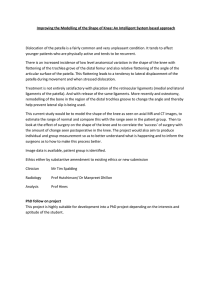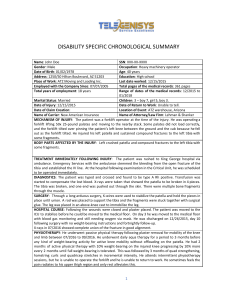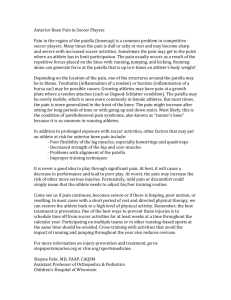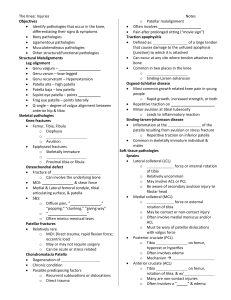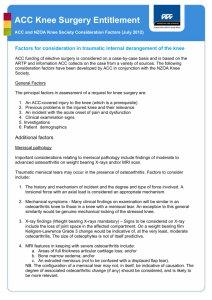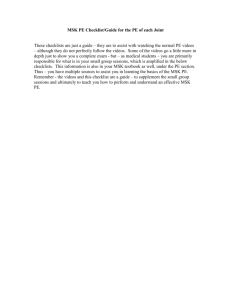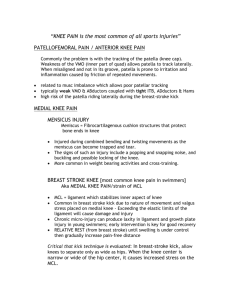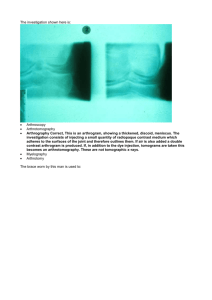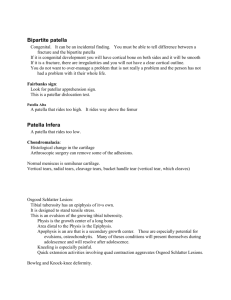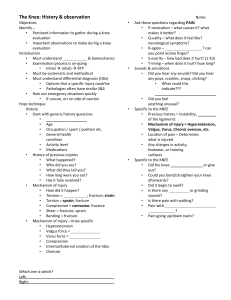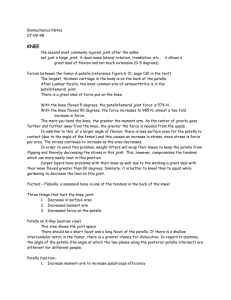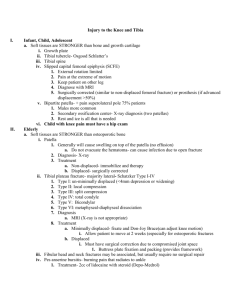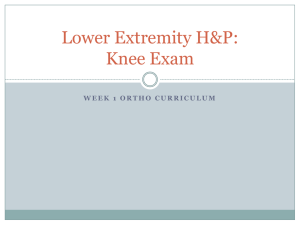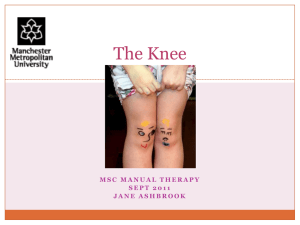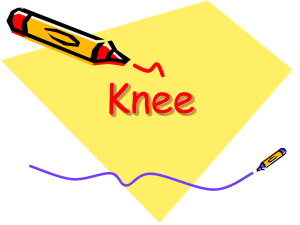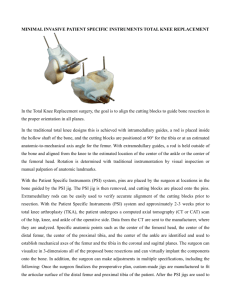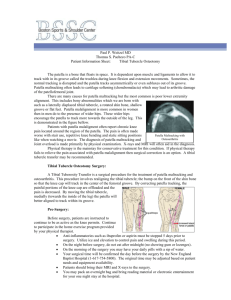Heligman total knee
advertisement
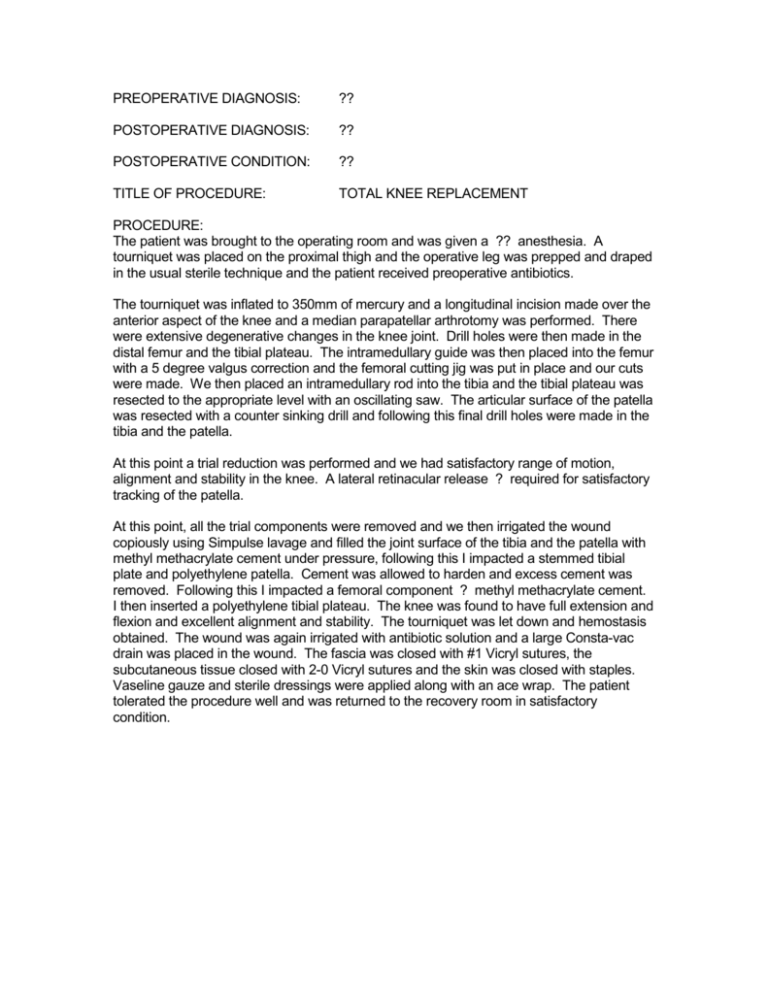
PREOPERATIVE DIAGNOSIS: ?? POSTOPERATIVE DIAGNOSIS: ?? POSTOPERATIVE CONDITION: ?? TITLE OF PROCEDURE: TOTAL KNEE REPLACEMENT PROCEDURE: The patient was brought to the operating room and was given a ?? anesthesia. A tourniquet was placed on the proximal thigh and the operative leg was prepped and draped in the usual sterile technique and the patient received preoperative antibiotics. The tourniquet was inflated to 350mm of mercury and a longitudinal incision made over the anterior aspect of the knee and a median parapatellar arthrotomy was performed. There were extensive degenerative changes in the knee joint. Drill holes were then made in the distal femur and the tibial plateau. The intramedullary guide was then placed into the femur with a 5 degree valgus correction and the femoral cutting jig was put in place and our cuts were made. We then placed an intramedullary rod into the tibia and the tibial plateau was resected to the appropriate level with an oscillating saw. The articular surface of the patella was resected with a counter sinking drill and following this final drill holes were made in the tibia and the patella. At this point a trial reduction was performed and we had satisfactory range of motion, alignment and stability in the knee. A lateral retinacular release ? required for satisfactory tracking of the patella. At this point, all the trial components were removed and we then irrigated the wound copiously using Simpulse lavage and filled the joint surface of the tibia and the patella with methyl methacrylate cement under pressure, following this I impacted a stemmed tibial plate and polyethylene patella. Cement was allowed to harden and excess cement was removed. Following this I impacted a femoral component ? methyl methacrylate cement. I then inserted a polyethylene tibial plateau. The knee was found to have full extension and flexion and excellent alignment and stability. The tourniquet was let down and hemostasis obtained. The wound was again irrigated with antibiotic solution and a large Consta-vac drain was placed in the wound. The fascia was closed with #1 Vicryl sutures, the subcutaneous tissue closed with 2-0 Vicryl sutures and the skin was closed with staples. Vaseline gauze and sterile dressings were applied along with an ace wrap. The patient tolerated the procedure well and was returned to the recovery room in satisfactory condition.
